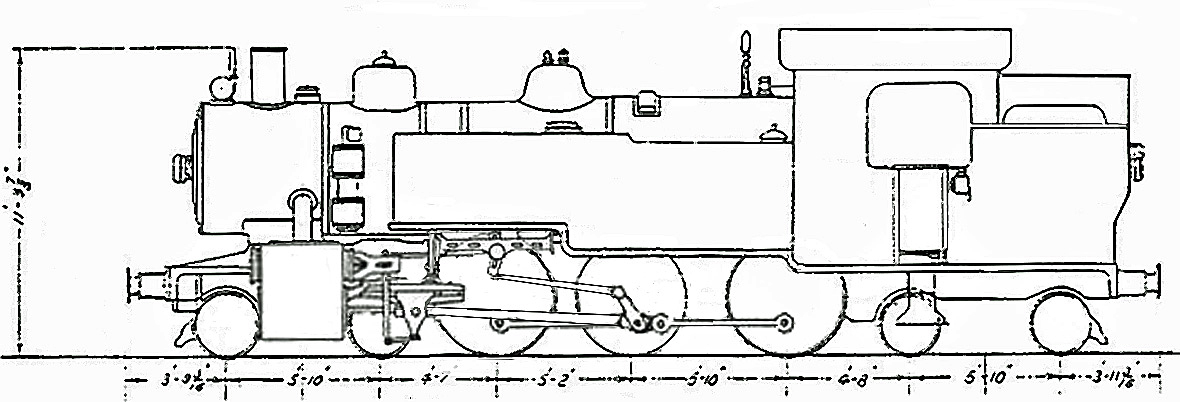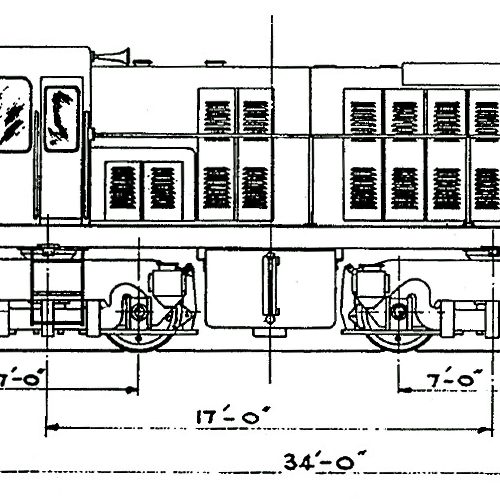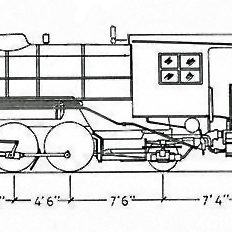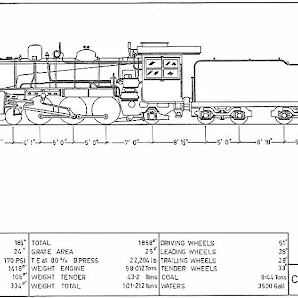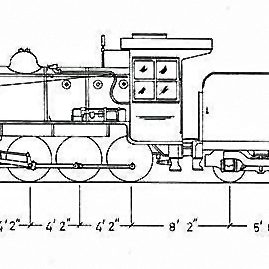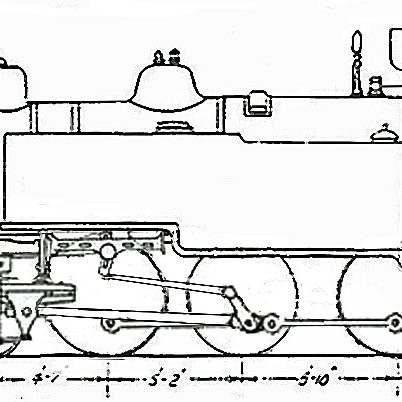These tank engines were designed at the end of World War 2 to cater for growing Brisbane suburban traffic. They were an improved version of the earlier D17 Class incorporating many modern features including roller bearings, longer travel valves and self-cleaning smokeboxes. The design took full advantage of the loading gauge to provide a slightly larger boiler together with increased coal and water capacity. Higher boiler pressure and increased piston stroke made the new engines more powerful than their predecessors. An unusual feature of the locomotives, for QR at least, was that the top of the chimney was lower than the height of the cab roof. Approval was granted for Ipswich Workshops to construct six engines, but post war material shortages and heavy maintenance programme delayed the delivery of the first of these until 1948. By this time, increasing traffic caused the size of the order to be doubled. Their introduction allowed the last of the aging saturated D16 class tank engines to be retired and several of the D17 Class at Mayne to be transferred to Wooloongabba.
All engines were attached to Mayne depot and, like their predecessors, were restricted to the Brisbane suburban area bounded by Grandchester, Ferny Grove, Pinkenba, Shorncliffe, Petrie, Kingston and Lota. Initially they were used exclusively on the Northside suburban passenger and a few local goods trains in the ‘off peak’ periods. With full tanks the engines had a good factor of adhesion and were capable of rapid acceleration away from stations. They were able to haul an eight-car stopping passenger train between Central and Ipswich without taking water en route. This feat was beyond the capacity of the slightly less powerful D17s and so enabled some tender engines to be released for long distance country trains. In later years, tender engines resumed working these and other longer suburban runs and the DD17s took over from the older D17 engines on trains to intermediate termini where there were no turning facilities. Increasing numbers of 1720 Class DEL saw them eliminated from these passenger workings in August 1967. After the closure of Wooloongabba depot in September 1967, several made appearances on the Southside passenger trains until the dieselization of those services later the following year.
Between 1953 and 1956 the class suffered a number of embarrassing failures in traffic due to broken driving axles and fractured coupling rods. Fortunately, none of these incidents resulted in seriously consequences. The defect was overcome with fitting of “Vibroc” steel axles and altering the horn cheeks. After these alterations, they then established a reputation for reliable service that was not surpassed until they were replaced by diesels.
Prototype N°949 was painted black when it entered service on 17th December 1948. The second engine, N°950 was the 200th locomotive constructed at Ipswich Shops and was exhibited at the first Queensland Industries Fair in May 1949. It was painted in a dark Royal blue livery with red and silver trim. The engine was kept in steam during the display with its wheels mounted slightly above the rails so as they could rotate. When N°951 – N°954 were completed later that year, they also appeared in the same colour scheme. N°949 was similarly repainted in October 1949.
The second batch (N°1046 – N°1051) were constructed between 1950 and 1952. N°1051 was not only the last of the class but also the last locomotive to be constructed by Ipswich Workshops and it entered service on 3rd July 1952. This batch of engines was painted “Midway” blue; a colour midway between Royal and sky blue. The first six were later similarly repainted. This colour scheme earned them the nick name “Blue Babies”.
N°1048 was the first member of the class to be withdrawn and was written off in November 1966. N°952 and N°953 followed in 1967 with a further seven engines in 1968. N°1046 and N°1049 survived until the following year.
Four members of the class survive today. N°1046, N°1047 and N°1049 were sold to Zig Zag Railway. N°1051 was retained by QR. It was overhauled and restored to working order by Ipswich Workshops in August 1993
Locomotives
-
Wheel arrangement
4-6-4T
-
Cylinders (diameter X stroke) ins. (4)
17 X 24
-
Rigid Wheel Base
11’0””
-
Length over Buffers
39’7⅜
-
Coupled Wheels diameter ins.
51
-
Axle Load
12.2
-
Boiler Pressure psi
180
-
Heating Surface of tubes - sq feet
795
-
Heating Surface total - sq feet
1064
-
Grate area - sq feet
18.5
-
Weight - adhesive - tons
36.5
-
Weight Engine
62.0
-
Coal capacity - tons
4
-
Tractive Effort - lbs. (85%)
20800
-
Factor of Adhesion
3.93
-
Valve Gear
Walschaert
-
WH Pump
10 X 10⅝
-
Brake Valve
N°4
